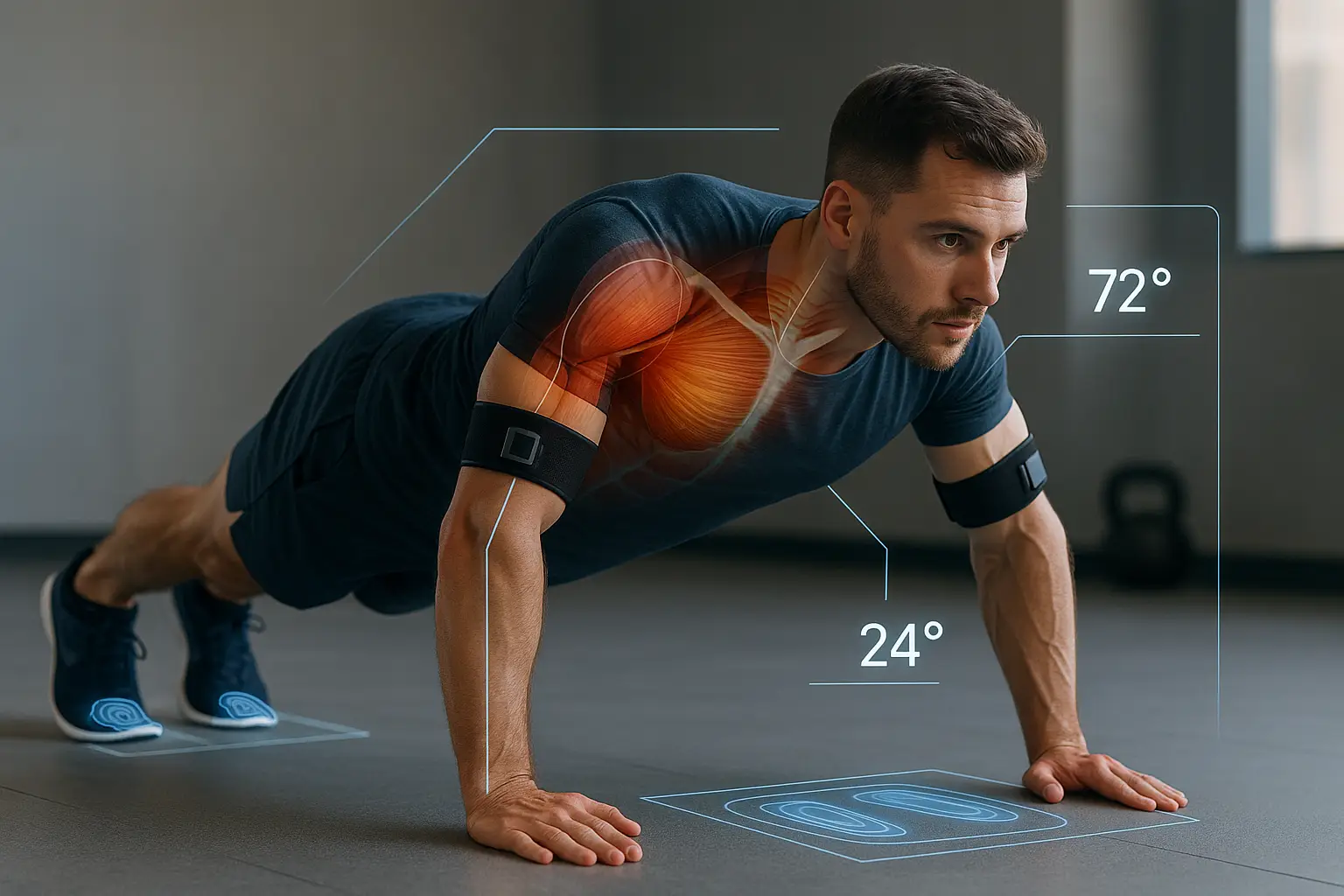Real-Time Biomechanical Feedback for Bodyweight Athletes

Real-Time Biomechanical Feedback (RT-BMF) is transforming how bodyweight athletes—from calisthenics enthusiasts to functional fitness devotees—train, recover, and perfect technique. By delivering instantaneous data on muscle activation, joint angles, and force production, RT-BMF tools empower you to fine-tune every rep, reduce injury risk, and accelerate progress without bulky lab equipment. Here’s a deep dive into the technology, applications, and practical tips for integrating RT-BMF into your bodyweight routine.
What Is Real-Time Biomechanical Feedback?
At its core, RT-BMF involves wearable sensors that measure physiological or mechanical parameters—such as electromyography (EMG), acceleration, and pressure—and stream that data live to a display (mobile app, AR headset, or haptic device). Unlike traditional biomechanical analysis, which requires post-session video review in a lab, RT-BMF delivers:
- Muscle activation levels via surface EMG sensors placed on the skin (pmc.ncbi.nlm.nih.gov, cometasystems.com)
- Motion and joint angles with inertial measurement units (accelerometers + gyroscopes) (pmc.ncbi.nlm.nih.gov)
- Force distribution through pressure-sensitive insoles or grip sensors (researchgate.net)
This live stream of data enables on-the-fly adjustments—correcting form errors mid-rep, managing load distribution, and ensuring optimal recruitment of target muscles.
Why Bodyweight Athletes Need RT-BMF
Calisthenics and other bodyweight disciplines demand precision: a slight elbow flare can shift stress from chest to shoulder; a rounded lower back in a plank negates core engagement. RT-BMF addresses these challenges by:
- Form Correction in Real Time
- EMG feedback highlights under-recruitment of key muscles (e.g., glutes in a squat), prompting immediate activation cues. (cometasystems.com)
- Inertial sensors detect joint-angle deviations (e.g., hips dropping in a push-up), triggering visual or haptic alerts. (drjamesmorales.com)
- Quantifying Effort & Fatigue
- Force sensors under the hands or feet reveal uneven load-bearing, helping you distribute force evenly and prevent overuse injuries. (researchgate.net)
- Continuous HRV (heart rate variability) monitoring combined with movement data guides intensity decisions—knowing when to push versus when to rest (pmc.ncbi.nlm.nih.gov).
- Data-Driven Progressions
- Historical EMG and kinematic data feed machine-learning algorithms that suggest optimal progressions (e.g., advancing from tuck L-sit to full L-sit when stabilization metrics reach threshold).
- Performance dashboards track improvements in muscle recruitment patterns and movement symmetry over weeks and months.
Key RT-BMF Technologies & How They Work
Technology
Sensor Type
Primary Feedback
Surface EMG Bands
Electromyography pads
Muscle activation intensity & timing (cometasystems.com)
Inertial Measurement Units
Accelerometer + Gyroscope
Joint angles, velocity, acceleration (pmc.ncbi.nlm.nih.gov)
Pressure-Sensitive Insoles
Force sensors
Ground reaction forces, balance shifts (researchgate.net)
Haptic Feedback Wearables
Vibration motors
Instant “buzz” alerts on form deviations
AR/VR Overlays
See-through displays
Visual guides (e.g., ideal plank line) (numberanalytics.com)
Practical Applications for Your Bodyweight Training
- Perfecting Push-Ups & Dips
- Wear EMG bands on chest and triceps to ensure balanced activation. Receive a haptic pulse if your triceps dominate too early, preserving shoulder integrity (cometasystems.com).
- Nailing L-Sits & Planks
- Use inertial sensors at hips and shoulders. An AR headset overlay can project your target torso angle, ensuring a rigid, hollow body position (numberanalytics.com).
- Optimizing Squats & Lunges
- Pressure insoles highlight uneven heel-to-toe loading. Adjust foot pressure in real time to engage glutes maximally and protect knees (researchgate.net).
- Advanced Skill Training (Handstands, Planches)
- Combine EMG feedback with inertial data to track scapular engagement and core bracing. Custom apps can auto-suggest micro-adjustments—tuck wrists more, shift weight slightly forward—until you hit perfect balance.
Emerging Trends & Future Directions
- AR-Enabled Smart Glasses: Early prototypes like ENGO 2 show the potential for head-up displays of heart rate, rep counts, and joint angles—though ergonomic refinements are still needed (androidcentral.com).
- Embedded Textile Sensors: Skin-tight shirts and leggings woven with micro-sensors promise full-body motion capture without individual modules.
- AI-Driven Coaching Agents: Virtual trainers that interpret RT-BMF data and deliver spoken cues (“Keep your back flat,” “Activate glutes now”) based on machine-learning models trained on elite calisthenics form.
Getting Started: Integrating RT-BMF into Your Routine
- Select Your Core Sensors: Start with a surface EMG band kit (e.g., Delsys Trigno) and a pair of pressure insoles.
- Choose a Feedback Interface: Use a smartphone app for haptic/vibration alerts or invest in basic AR glasses for visual overlays.
- Calibrate & Baseline: Perform a few sessions to record your natural movement patterns. Identify key deviation thresholds for alerts.
- Progress Gradually: Begin with form-focused drills—slow eccentrics in push-ups or squat holds—while monitoring real-time data.
- Review & Adjust Weekly: Analyze session logs to tweak technique cues and progression recommendations.
Conclusion
Real-Time Biomechanical Feedback represents the frontier of precision training for bodyweight athletes. By blending EMG, inertial sensing, pressure analysis, and AR overlays, RT-BMF systems close the gap between lab-grade biomechanics and everyday workouts—letting you train smarter, avoid injury, and master complex calisthenics skills faster than ever before. Embrace the data, fine-tune your form, and watch your bodyweight practice evolve into a science-backed art.